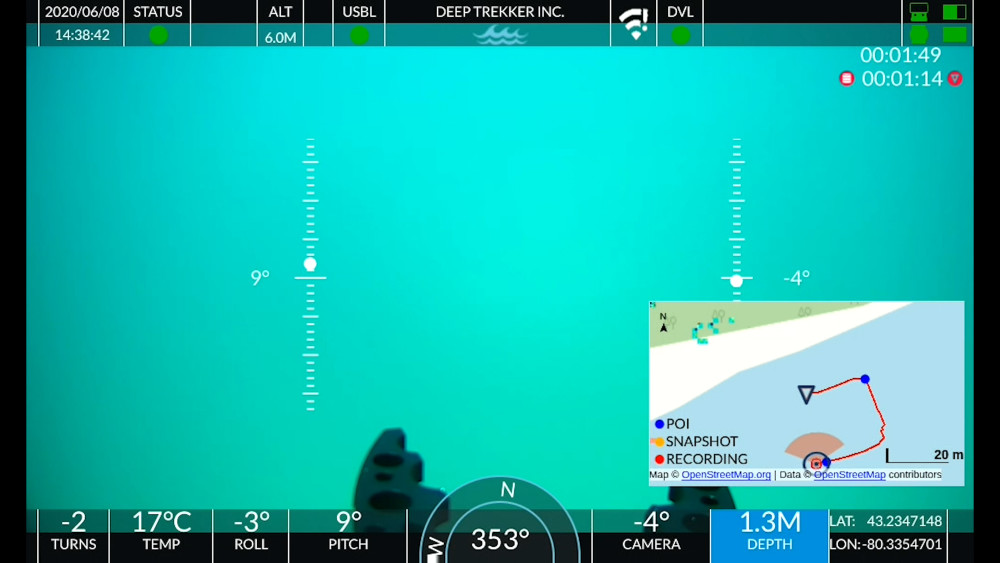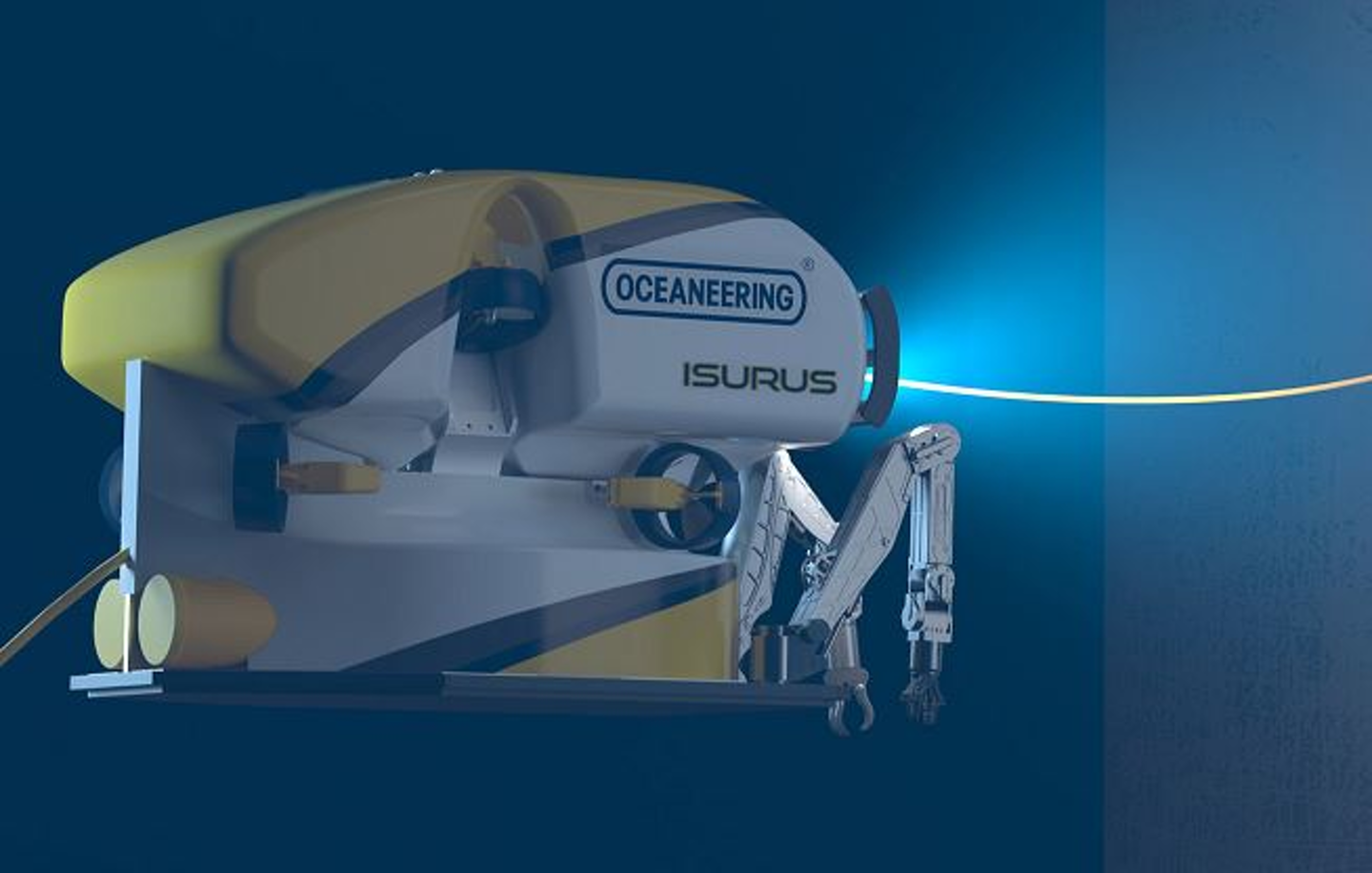Home › Forums › General › General Board › Sharks and the threat to communications
- This topic has 4 replies, 4 voices, and was last updated 14 years, 8 months ago by
K2.
-
AuthorPosts
-
November 15, 2009 at 5:26 pm #3115
Rons_ROV_Links
ParticipantFinancial Times quotes Global Marine’s Ian Douglas about sophisticated burial techniques to protect subsea cables.
…and another link.
November 15, 2009 at 7:55 pm #25521Andy Shiers
ParticipantI think my eyesight is going Ron 😕
The print was all fuzzy 😯
The other Link only led me to another "Sign-up now for free ( And we will be able to sell your details to someone else you don’t know 🙁
I get the gist though , interesting 🙂
I hope the sharks become addicted 😀November 15, 2009 at 8:10 pm #25522Rons_ROV_Links
ParticipantHere’s the complete article from the Financial Times:
Networks: Sharks and the threat to communications
It sounds crazy: take delicate fibre optic cables, place them at the bottom of the ocean – one of the most ungovernable environments on earth – and run huge volumes of critical voice and data traffic through them.
Yet that is how 95 per cent of the world’s cross-border internet and telephone communications travel, because subsea cables are far cheaper, faster and can carry a greater capacity than satellite communications.
The snag, however, comes when something goes wrong: the impact of a breakage on the submarine tangle criss-crossing the seabed can be immediate and far-reaching.
On two separate occasions in 2008, subsea cable failures in the Mediterranean between Italy and Egypt denied internet access to millions of people across the Middle East and left Indian outsourcing companies struggling to meet their service-level agreements with international customers.
Each incident sparked speculation over acts of terrorism. But there are many bigger threats to cables, says Georges Krebs, chief operating officer of Alcatel-Lucent’s submarine networks business, which manufactures many of these undersea links.
Cables are damaged by rubbing against rocks on the seabed, for example. Trawlers’ nets are an increasing danger in previously unfished waters; and any ship’s anchor can be a hazard.
Sharks, too, can cause communications blackouts: “We’ve seen shark teeth embedded in the polythene casing that surrounds these cables, especially around the Canary Islands, where underwater visibility is low.
“We think they’re attracted by the electrical feeds emitted, so we add an additional layer of steel under the polythene where we believe there’s a particular ‘fish bite’ risk,” says Mr Krebs.
Increasingly sophisticated burial techniques are helping to protect cables from some of these hazards, says Ian Douglas, managing director of the telecoms business unit of Global Marine Systems, a UK-based specialist in installing and repairing subsea cables.
“We can now bury cables as deep as 10 metres below the seabed in order to protect them – and we can do this in up to 200 metres of water,” he says.
“But there’s still not much that can be done about some threats, such as subsea earthquakes and volcanic activity, apart from avoiding installing cable in known seismic troublespots.” Sometimes, he adds, that’s unavoidable.
When a cable operator reports a break to Global Marine Systems, a ship is sent out within 24 hours. The ship’s crew will have a pretty good idea of the break’s location – “usually to within a kilometre, thanks to technology that streams light pulses down the cable, which bounce back from the breakage point”.
Remotely operated vehicles are then sent down from the cable repair ship to trim the cable and bring the two loose ends up to the surface, where they are spliced together again. On average, Global Marine Systems mounts about 50 such operations each year.
A subsea cable should have a lifespan of approximately 25 years – but spiralling demand for capacity means that constant updating is essential, reducing economic lifespans to between 10 and 15 years, according to Simon Cooper, vice-president of network strategy and architecture at cable operator Tata Communications.
Innovation therefore focuses on ensuring that much upgrade work can be performed at landing stations where a cable hits the shore, he says.
One company hoping to capitalise on the need for upgraded capacity is Infinera.
It already supplies high-capacity optical transmission equipment [used in fibre-optic based networks] for terrestrial networks and recently launched a submarine arm to its business.
So far telecoms companies Global Crossing and Telefónica have already signed up for Infinera’s technology, which uses photonic integrated circuits (PICs) to double the capacity of optical fibre.
“Using our technology, subsea cables and the amplifiers that are installed every 60km to 80km along their length can remain unchanged,” says Geoff Bennett, Infinera’s director of product marketing.
Meanwhile, new routes are needed, according to Alan Mauldin, an analyst with Telegeography, a telecommunications market research company.
International internet traffic growth has accelerated 79 per cent year-on-year in 2009, up from 61 per cent in 2008, with emerging markets such as eastern Europe, south Asia and the Middle East leading the charge.
“Traffic from each of these regions grew well over 100 per cent this year,” he says.
A new cable, however, takes between 18 months and three years to construct, at a cost of between $100m and $400m, says Mr Cooper of Tata Communications.
To spread the risks, many new cables are established by large consortia formed by international and domestic telecoms providers. Others are built by private operators, such as Reliance Globalcom, who typically raise the money needed for construction by pre-selling capacity to operators.
Vineet Nigam, group director for products and services, claims that the private operator model results in cables that are easier to manage and upgrade, because there is only one company involved.
Rick Perry, head of international network planning at Cable & Wireless, disagrees, questioning the ability of a single company to make enough money from a cable to guarantee this outcome and pointing to the significant global expertise and links to cable suppliers that a major multinational consortium can boast.
But he adds that there is room for both models. Cable & Wireless, he says, will sometimes buy capacity from a private cable operator, or take part in a consortium, or operate its own private cable.
The question of who owns and operates undersea cables makes little difference to the vast numbers of consumers and companies who depend on them.
When Typhoon Morakot hit Taiwan in August this year, triggering underwater landslides, internet and phone services were only minimally disrupted despite widespread undersea cable cuts, because operators were able to take advantage of recently installed capacity and to reroute traffic on to each other’s networks.
By contrast, an earthquake in the same region on Boxing Day 2006 left millions offline for weeks.
November 15, 2009 at 10:49 pm #25523James McLauchlan
ParticipantSharks, too, can cause communications blackouts: “We’ve seen shark teeth embedded in the polythene casing that surrounds these cables, especially around the Canary Islands, where underwater visibility is low.
Oh yeah right!
Sounds like that person knows a lot about the type of cable used for crossings then…
November 16, 2009 at 6:00 am #25524K2
ParticipantI’ve heard of this before. In deep water where burial isn’t required, light weight cables are used. There are several types of light weight cable and the outer protection is polyethelene. This can easily be pierced revealing the power conductor causing a shunt fault on the cable system. Usually the power feeds from either end of the system are adjusted to this new ‘virtual earth’ but sometimes it’s not possible and the system will go down. Some cables are only mm in outside diameter and could easily be piereced all the way through thus damaging the fibres which would also take out a cable system. There are cables out there designed with sharks in mind and although these are a type of LW cable they are well known as shark bite protected.
-
AuthorPosts
- You must be logged in to reply to this topic.



